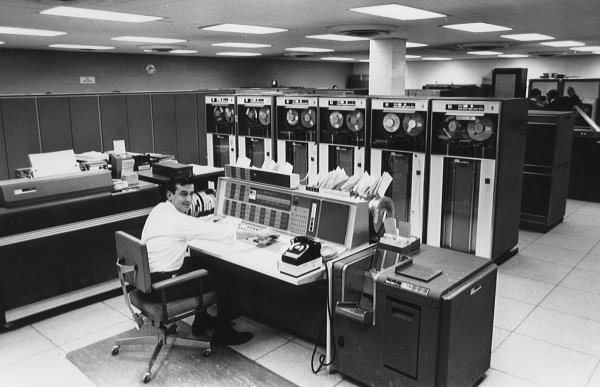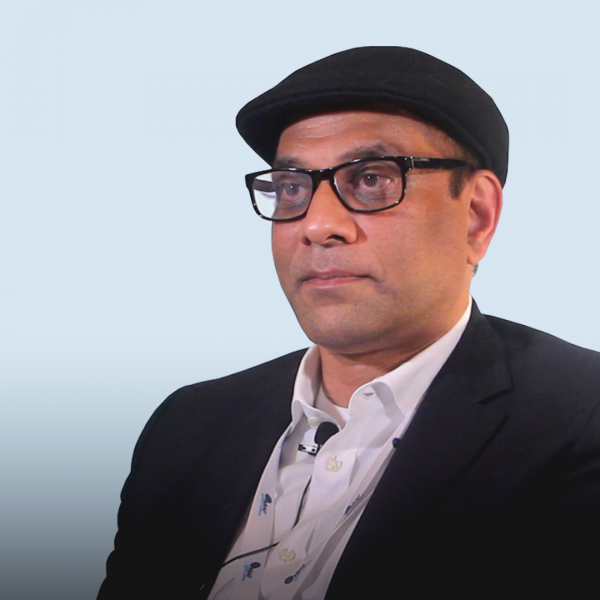
Throw it back a couple of decades and the word මචං would probably have appeared online as gibberish text or tiny squares. Being able to communicate in the Sinhalese alphabet on the internet just wasn’t an option available to Sri Lankans.
But thanks to the work of many individuals over the years, the formation of the Sinhala Unicode has allowed digital content creators to reach a wider Sinhalese-speaking community.
We take a look at the history of how Sinhala fonts were introduced, and how we got to where we are at now.
CINTEC and Australian Roots

The complexities of the Sinhala alphabet have created many interesting challenges. Image courtesy wikimedia.org
Way back In 1985, when only a handful of Sri Lankans even owned a computer, CINTEC formed a committee to deliver Sinhala and Tamil fonts for computers, realising the potential that content in Sinhala and Tamil had towards improving ICT in Sri Lanka.
One of the first instances of a use of a Sinhala font was reportedly in Australia, where the Venerable Gangodawila Soma Thero was interested in producing a newsletter in Sinhala. This led to the formation of one of the earliest Sinhala fonts named ‘Lihil’, by Jayantha de Silva.
It was 1990 when Sri Lanka first saw its real major breakthrough, when the University of Colombo created WadanTharuwa, a Sinhala Word Processor.
This set the precedence for the important phase of the 1990s, where new Sinhala fonts emerged along with breakthroughs in Sinhala software and content.
One of the key contributors during this era was Niranjan Meegammana, who produced the TrueType Font ‘Kandy’, and would later produce the next version of the font in ‘New Kandy’, packaged as part of Sinhala Word, one of the first Word Processors to feature both Sinhala and Tamil fonts.
Despite all these milestones, two fundamental problems still remained that would hinder true user growth and retainership.
- The user would have to install these fonts to display the content
- The complexity of the Sinhala alphabet resulted in an unsavoury user experience and large learning curve.
The Wijesekara Keyboard was designed for the purpose of giving Sinhala content creators the ability to use a standard QWERTY keyboard to type out Sinhala letters. With an actual Sinhala keyboard too costly to produce, the only viable solution at the time was to map out a QWERTY keyboard and use alternative keys, such as Shift, to produce the variances of Sinhala letters.
Even with the introduction of the Wijesekera Keyboard, there came several oddities such as using W for අ and using a combo of Shift+Number 8 to produce ෆ. New users were hard to convert as most grew impatient with the steep learning curve involved, and using an English keyboard for Sinhala was not the most effective and efficient of solutions.

The complexity of using an English keyboard to type Sinhala made for a steep learning curve. Image courtesy University of Colombo School of Computing
Publisher and Developer at Sinhala for iOS, a product that was launched in 2014, Bhagya Nirmaan Silva had this to share on the stumbling blocks we still face in having an effective Sinhala keyboard:
“Having to create Sinhala for iOS is a testament that Sri Lankans – specifically the Sinhalese collectively have not been able to make their mark or at least be recognised in general when it comes to internationalization. If we did, we should be having a native and built-in Sinhalese keyboard with almost all major operating systems without the need for anyone to build extensions or work-arounds.”
It simply took too long to type out content, and for ones that wanted to adopt it for more casual usage, the user experience was too poor for most of these users to invest their time, especially since it was predominantly the English speaking population that had access to computers at this time.
Despite CINTEC introducing the standards for the Sinhala unicode (SLS1134) in 1998 the problems remained in how long it took to produce content.
We asked the creator of Sinhala SP, Dasith Wijesiriwardena about his own experiences dealing with this issue:
“At the time of developing Sinhala SP typing in Sinhala was certainly limited to very specific use cases and people who worked in certain fields. It was still magic to most people to even see digital Sinhala content. The very first Sinhala typewriters used the “wijesekara” layout which was approved by the government in the mid-1960s. This naturally progressed towards PCs and it was understood that anyone who wanted to type in Sinhala had to go through the steep-ish learning curve.”
The Formation Of Sinhala Unicode

Kaputa.com was one of the first popular Sinhala sites
The dawn of the new millennium saw the introduction of the Kaputa font that powered the website Kaputa.com.
For those of you that grew up in the ’90s, chances are you’ll have heard of Kaputa.com, one of the earliest Sinhala sites to gain mass popularity. While it’s fallen behind the times visually, it’s an interesting throwback to the early iterations of Sinhala websites.
The pace started picking up as the dot com bubble just ended, but ICT was showing signs of growth in Sri Lanka during this era.
Here are some of the significant developments during the first decade of the new millennium:
2002 ‒ The introduction of the Madura English-Sinhala dictionary. It continues to be widely used to this day, and while it didn’t necessarily add to the development of Unicode, its popularity led to a whole new wave of developers wanting to take Sinhala to the next level.
2004 ‒ New font released by Niranjan Meegammana, this time in collaboration with Tusitha Randunuge named Kaputa dot com.
This was followed by a couple of big breakthroughs when:
- The Lanka Linux User Group introduced Linux users to its Sinhala Unicode.
- Microsoft released Iskoola Pota, the first Sinhala Unicode font with official support.
Two of the three major operating systems finally had their own Unicode fonts, and it didn’t take long for browsers to add in Sinhala unicode support.
2005 ‒ The Sinhala Unicode community was formed in an effort to address the issues faced with Sinhala Unicode and its growth. In this same year, Sri Lanka witnessed the launch of its first Sinhala Unicode site in www.gov.lk, developed by Niranjan Meegammana.
2006 ‒ Sinhala SP by Dasith Wijesiriwardena bridges the gap between Sinhala Fonts and Sinhala Unicode using a new IME that uses the concept of English to Sinhala transliteration (Singlish).
Dasith told us at Roar that his idea for transliteration came from a blogger:
“This is where Singlish really shined. I got the inspiration to do it after seeing an early implementation by a blogger called A. D. R. Sasanka. It had some issues but the idea was awesome. I spent a couple of weeks studying the different groups of Sinhala characters and how different preceding and succeeding characters made their pronunciations different. I was quickly able to identify patterns and come up with an algorithm.”
On the impact that Singlish made to Sinhala Content, Dasith had the following thoughts:
“With Singlish IME we could already tap into the knowledge of using the English keyboard and pronunciation of Sinhala words among most Sri Lankan computer users. This was a paradigm shift for content creation. Now everyone could create Sinhala content. The novelty factor of it made it even more “cool” among teenagers. This was just what Sinhala content creation needed.”
2007 ‒ The ICTA launched the local languages initiative.

Transliteration has become the most popular way of writing in Sinhala
In the same year, the University of Colombo launched the Online Unicode Keyboard.
What’s Next For Sinhala?
Post 2007, we’ve seen some notable additions to Sinhala content creation tools such as Helakuru Sinhala Keyboard, Sinhala for iOS by Bhagya Nirmaan Silva, and Google’s Input Tools—the latter which uses the Singlish translation (nothing revolutionary) concept to output text, but,, because it’s Google, everyone uses it.
When Roar asked if Bhagya faced any major issues getting approval from Apple, he said that the process wasn’t too difficult:
“Apple has been one of the companies who have been at the forefront in providing international text support on their devices. Even the old Apple Macintosh computers have had the support for Sinhala typography since the first bitmapped Sinhala fonts for Mac appeared around 1993 and even before that, in some cases. In turn, getting the Sinhala for iOS to be approved was quite easier. The iOS operating system already had the ability to display Sinhala text based on Unicode, and I had to follow Apple standard guidelines when creating and publishing the app. While Sinhala for iOS was the first iOS native keyboard extension for Sinhalese, there have been quite a few attempts by different individuals to create in-app keyboards which need to be appreciated for their efforts.”
Bhagya went on to mention that Sinhala, despite its acceptance as unicode, still faces some pressing issues:
“Major Operating System vendors like Apple, Canonical, Google, and Microsoft always look towards standards and reference implementations of localisation and keyboard layouts when they are adding support for a language. Unfortunately, [the] Sinhalese language is one of the few languages without a proper reference implementation, although we have a published standard SLSI 1134 for the layout.
As a result of this, people are using different layouts such as phonetic or alphabetic instead of the standard SLSI 1134 based on the original Wijesekara layout.”
Dasith Wijesiriwardena urged that Sri Lankans need to take more responsibility:
“As Sri Lankans we need to demand more from our own developers. The technology stack and patterns for internationalisation of South Asian languages are already there. What we lack is the population for industry giants to invest time/effort to do localisation. This is where the Sri Lankan developers can play an active role. Developers can contribute to Open Source projects and even tinker with language files to make software available in Sinhala.”
Dasith was also keen that Sri Lankans invest their time in AI and Machine Learning for the next wave of digital Sinhalese products:
“AI and Machine Learning are at our doorstep. The tech world is going through this disruption as we speak. I think we are still behind in terms of voice and handwriting recognition for the Sinhala language.”
Roar went back to Bhagya to find out whether he believes that Sri Lankans are supportive enough of developers that are looking to produce Sinhala-based products:
“I do not think we should specifically support anyone who is focusing on building pure Sinhala-centric applications or products, since that idea sounds a bit too tribal and counter progressive. However, I believe it’s important to support anyone who is pushing for standards and anyone who is focusing on building multilingual applications that uplift and empower all Sri Lankans regardless of the language.”
The road has been long and rocky at times, but thanks to the hard work and contribution of some extremely dedicated individuals such as Niranjan Meegammana, Dasith Wijesiriwardena, and Bhagya Nirmaan Silva, a vast majority of Sri Lankans can now read and write content in their mother tongue on multiple platforms, when just a few years ago, all we could see was a bunch of symbols and random characters.
With more up and coming websites offering Sinhala content, and young and enthusiastic developers emerging, Sinhala readers are in for a potentially exciting time.








